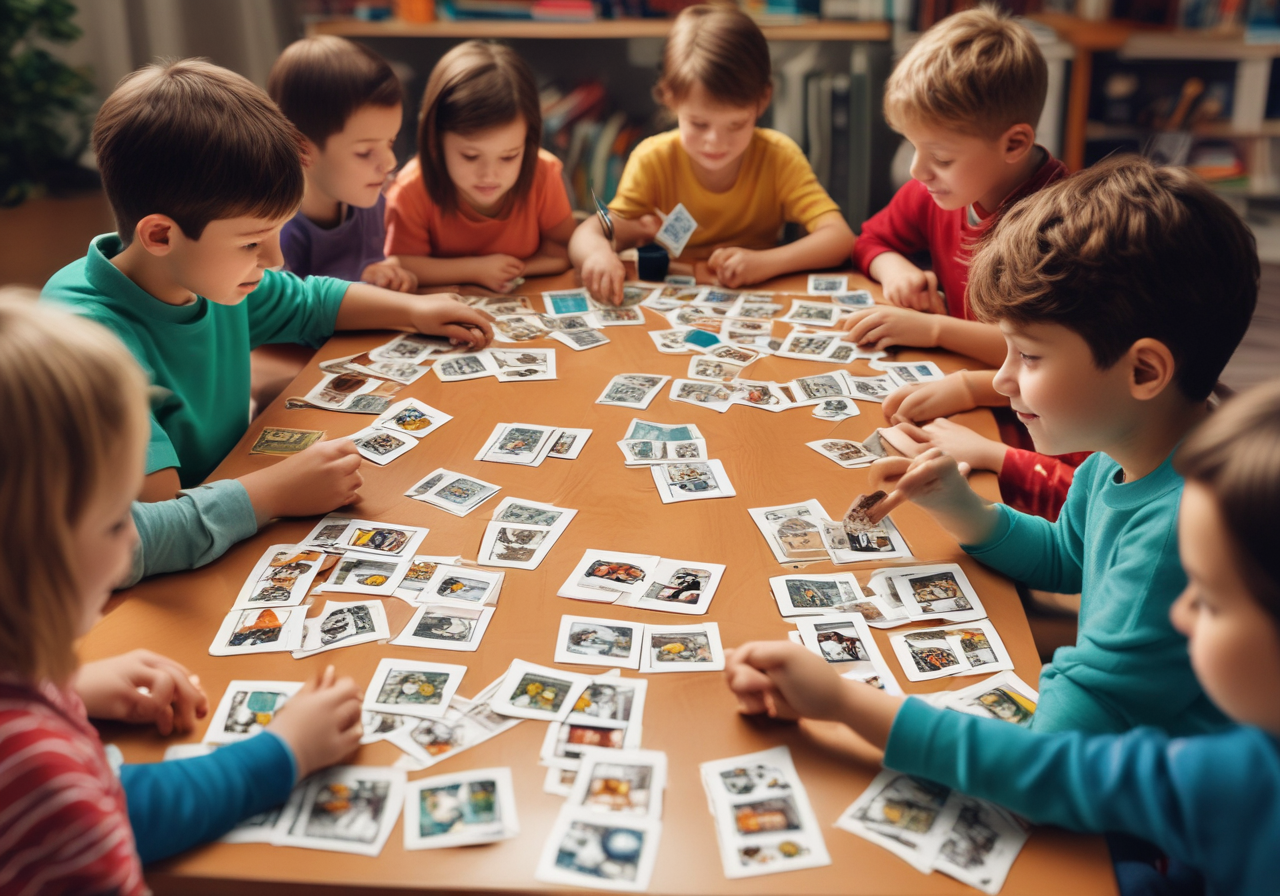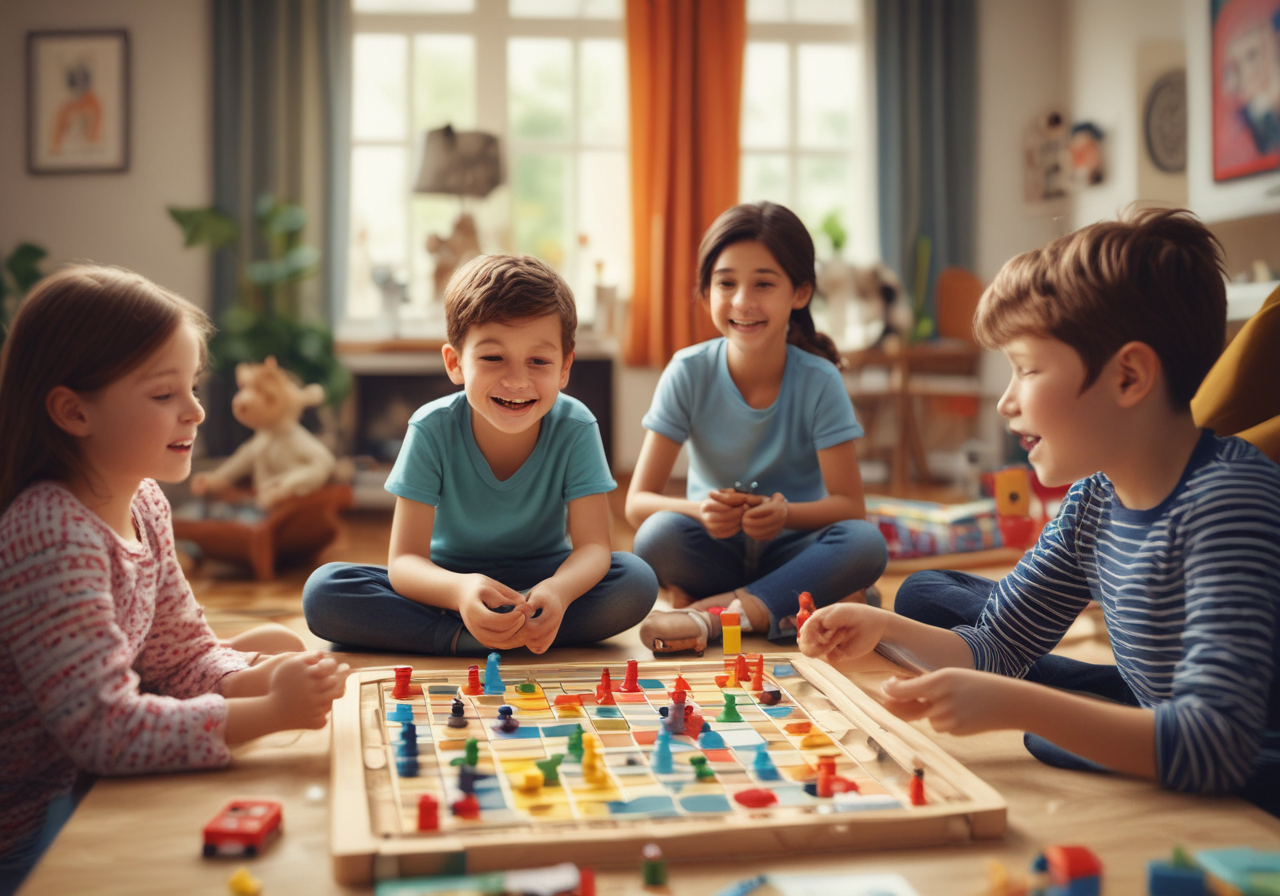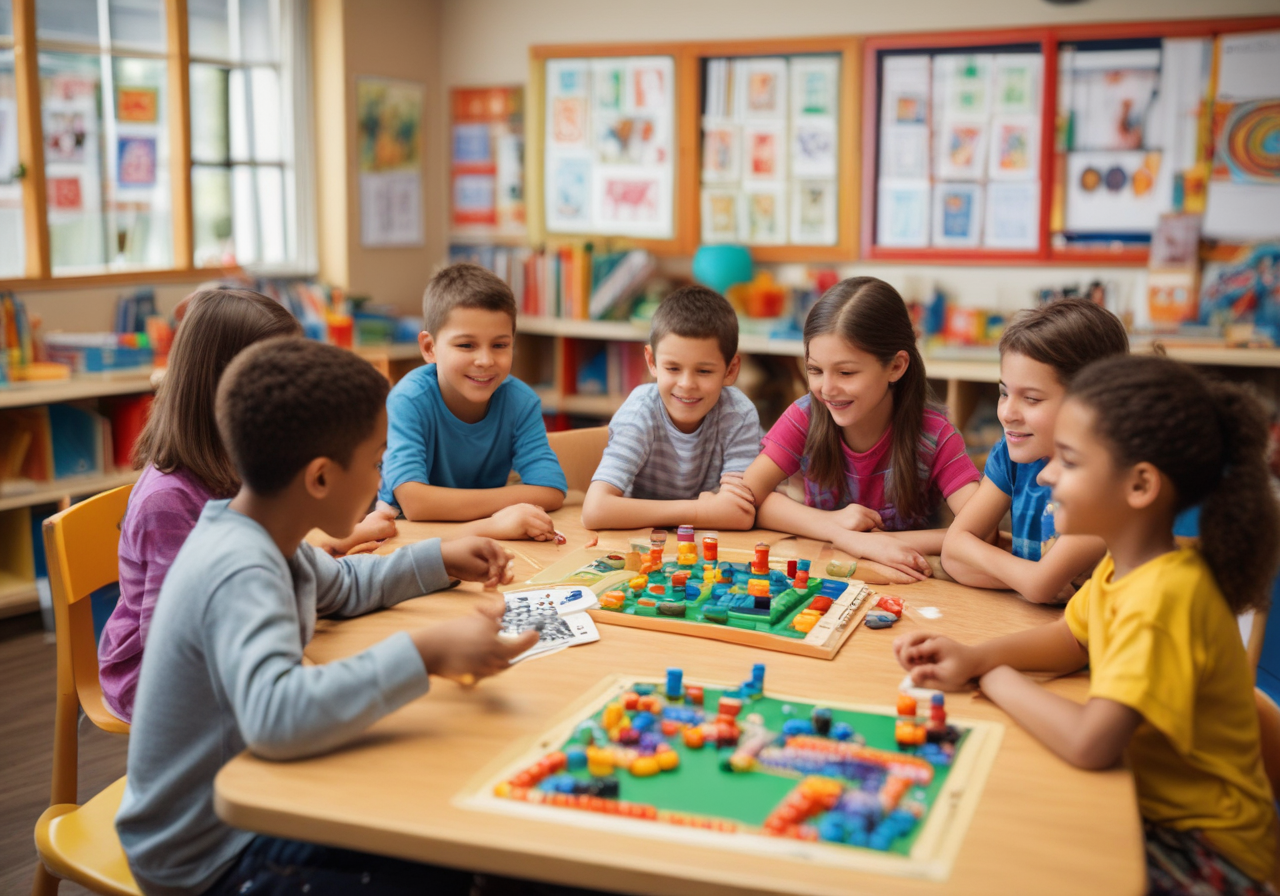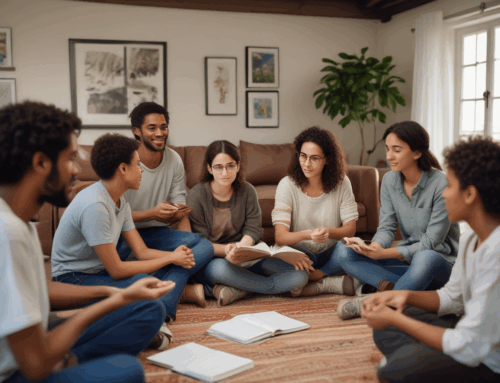ADHD-Friendly Games and Activities from Orlando Counselor
Here are some fun ADHD-friendly games and activities designed for elementary-age children. These activities support attention, self-regulation, impulse control, and emotional expression, while also being fun and engaging.
What are the common symptoms of ADHD in children and adults?
According to the Diagnostic and Statistical Manual of Mental Disorders (DSM-5) as defined by the American Psychiatric Association in the United States, ADHD, including inattentive ADHD, is characterized by persistent patterns of inattention and/or hyperactivity-impulsivity that interfere with functioning or development. A proper ADHD diagnosis of ADHD includes common symptoms of attention deficit disorder, mood disorders, and attention deficit hyperactivity disorder (ADHD symptoms) and signs of ADHD in children, including symptoms of inattentive type ADHD such as impulsivity, hyperactivity, and difficulty focusing, which are often noted by healthcare providers during assessments. ADHD, as a medical condition and neurodevelopmental disorder, can also present diagnostic criteria in challenges for adults with time management, organization, and attention, impacting overall brain development. Both groups often struggle with forgetfulness and task prioritization in their daily activities. Recognizing these symptoms of ADHD and the type of ADHD can enhance support and management strategies for ADHD in daily life.
There are three main types of ADHD: predominantly inattentive presentation, predominantly hyperactive-impulsive presentation, and combined presentation, each characterized by distinct behaviors and challenges that affect daily functioning
ADHD treatment often involves a multifaceted approach that includes behavioral therapy, psychoeducation, and medication to help manage symptoms and improve overall functioning.
1. Movement-Based Games
Simon Says
Impulse control and listening skills are crucial aspects of a child’s development that younger children with ADHD, or as part of ADHD, may struggle with, often leading to behavior problems in young adults. Teaching these skills can be facilitated through engaging activities like playing games that require turn-taking, following instructions, and active listening, alongside parent training in special education strategies. By practicing impulse control, children learn to think before acting, make better decisions, and regulate their emotions effectively. Improving listening skills helps children understand and process information better, enhancing their communication abilities and academic performance. Encouraging activities that promote these skills from a young age can have long-lasting positive effects on a child’s social and emotional development.
Red Light, Green Light
Learning to stop and start on command is vital for developing self-regulation. This skill helps individuals control impulses and behaviors, crucial for managing emotions, focusing, and making thoughtful decisions. Activities that promote this ability improve attention span, impulse control, and self-discipline, benefiting both personal and professional life. For children, this practice fosters essential executive functioning skills necessary for academic success and social interactions. For adults, it enhances productivity, stress management, and relationships. Incorporating exercises that emphasize stopping and starting can enhance self-control across all ages.
Freeze Dance
“Dance to music and freeze when it stops” is not only a fun activity but also a great way to encourage motor control and attention in children. This game promotes physical coordination as kids need to move their bodies in time with the music and then stop abruptly when it ends. It helps them develop a sense of rhythm, balance, and spatial awareness. Additionally, the element of freezing requires focus and concentration, enhancing their attention span and self-regulation skills. This interactive game can be beneficial for both physical and cognitive development in young learners.
Animal Walks
Incorporating animal movements like bear crawl, crab walk, and bunny hop into physical activities can be highly beneficial for sensory integration. These movements not only engage the muscles but also stimulate the senses, providing valuable sensory input to the brain. Activities that mimic animal movements can help improve coordination, balance, and body awareness. They are particularly effective for children with sensory processing issues or individuals seeking sensory stimulation. Additionally, these exercises offer a fun and engaging way to promote physical fitness and overall well-being.
2. Mindfulness & Calm-Down Activities
Take 5 Breathing
Tracing your hand while focusing on your breath can be a simple yet effective mindfulness exercise. As you move up and down each finger, take slow, deep breaths in and out, allowing yourself to fully concentrate on the sensation of your fingers being traced and the rhythm of your breathing. This practice can help center your mind, reduce stress, and bring a sense of calmness to your body. Additionally, incorporating this mindful activity into your daily routine can promote relaxation and enhance your overall well-being.
Glitter Jar Watching
Observing the mesmerizing effect of shaking a jar filled with glitter and water and then watching it settle can be a calming and grounding experience. As you shake the jar, the glitter swirls around in a dance-like motion, reflecting light and creating a beautiful spectacle. Taking deep, slow breaths while watching the glitter gradually settle back to the bottom can help promote relaxation and mindfulness. This simple activity is often used as a mindfulness exercise to bring focus to the present moment and soothe the mind amidst chaos or stress. Children with ADHD are more prone to strong, intense feelings. The gentle movement of the glitter mimics the thoughts in our minds settling down, allowing for a moment of peace and clarity. Next time you’re feeling overwhelmed, try this visual meditation technique to reset and find inner calm.
Yoga Poses for Kids
Yoga can be a powerful tool for relaxation and focus, especially during times of stress or anxiety. Using cards or videos to guide simple yoga poses can be an effective way to calm the mind and center your focus. Poses such as Child’s Pose, Cat-Cow Stretch, and Legs Up the Wall are great for promoting relaxation and grounding energy. Incorporating deep breathing exercises along with these poses can further enhance the calming effect. Whether you prefer following along with yoga cards that outline the poses step by step or watching instructional videos online, incorporating these practices into your routine can help create a sense of peace and mindfulness for a child with ADHD.
Progressive Muscle Relaxation
Tensing and relaxing different body parts can enhance the mind-body connection and release tension in children with ADHD. Start from your toes, tensing each part before gradually releasing the tension. Notice the relaxation spreading through your feet, then move to your calves, thighs, buttocks, abdomen, chest, arms, shoulders, neck, and face. Pay attention to sensations like warmth or lightness in the muscles without judgment, allowing yourself to fully relax.

3. Focus and Memory Games
Spot the Difference
Visual games that aim to enhance attention to detail are not only entertaining but also beneficial for cognitive development in children with ADHD. These games can help individuals sharpen their observation skills, improve focus, and enhance visual memory. One example of such a game is spot the difference, where players have to identify variances between two seemingly identical images. This activity requires keen attention to detail and the ability to quickly discern subtle differences.
Another popular visual game is puzzles, which come in various forms such as jigsaw puzzles or logic puzzles. Working on puzzles challenges the brain to analyze patterns, shapes, and colors, thus improving attention to detail and problem-solving abilities. Additionally, activities like hidden object games or optical illusions can also be effective in training the mind to pay close attention to visual cues and details.
Memory/Matching Card Games
Working memory and visual focus are essential cognitive functions that play a crucial role in enhancing the quality of life in our daily lives. Improving these functions can enhance productivity, concentration, and overall cognitive performance in children with ADHD, including through the most effective treatment methods such as cognitive behavioral therapy techniques that assess the efficacy of treatment in normalizing brain activity.
One effective way to boost working memory is through brain-training exercises that challenge your memory capacity and retention. Activities like puzzles, memory games, and learning new skills can help strengthen your working memory over time. Additionally, practicing mindfulness techniques such as meditation can improve focus and attention span, which are integral components of working memory.
Scavenger Hunts
To enhance sustained attention and cognitive skills, providing clues or visual checklists can be highly beneficial for finding objects. Visual checklists offer a structured way to break down tasks and help individuals focus on completing each step systematically. By offering hints or clues, you can engage the individual’s problem-solving abilities and encourage them to actively search for the objects based on the provided information. This method not only promotes sustained attention but also sharpens observation skills and enhances memory retention. Additionally, incorporating interactive elements such as time limits or rewards for successful completion can make the activity more engaging and rewarding, further boosting motivation and concentration levels.
4. Creative Expression Activities
Draw Your Feelings
Externalizing emotions and expanding emotional vocabulary are crucial aspects of emotional intelligence and well-being. By expressing our emotions outwardly, whether through writing, art, or talking to others, we can gain a deeper understanding of our feelings and experiences. This process can help us make sense of our emotions and navigate through them effectively. Children with ADHD may struggle to express their emotions.
Practicing mindfulness, journaling, engaging in creative activities, or seeking therapy are some effective ways to externalize emotions and expand emotional vocabulary. These practices empower individuals to develop a healthier relationship with their emotions and cultivate emotional resilience.
Story Dice or Cards
Engaging in creative storytelling by rolling dice or drawing cards with pictures is a fantastic way to spark imagination and develop narrative skills. This activity can be particularly beneficial for children as it encourages them to think outside the box and construct unique stories based on the visuals they encounter. By incorporating elements of chance through dice rolls or card draws, storytellers are prompted to weave unexpected twists and turns into their narratives, fostering creativity and spontaneity. Furthermore, this interactive storytelling method can be a fun and collaborative way for individuals to come together, share ideas, and build upon each other’s stories in a playful and imaginative manner. Whether used as a learning tool in educational settings or as a recreational activity among friends and family, rolling dice or drawing cards with pictures offers endless possibilities for creating captivating and original tales.
Play-Doh Sculpting
Engaging in soothing tactile activities not only sparks creativity but also serves as an effective stress-relief technique. These activities involve using your sense of touch to create or interact with different textures, materials, or objects. Tactile activities such as sculpting with clay, knitting, coloring intricate patterns, or playing with sensory toys can help calm the mind and reduce anxiety levels. The act of physically engaging with these materials can be meditative and provide a sense of relaxation. Furthermore, these activities can stimulate the brain and encourage creative thinking, making them beneficial for both mental well-being and artistic expression. Incorporating tactile activities into your daily routine can be a simple yet powerful way to unwind and channel your inner creativity while promoting overall relaxation.

5. Turn-Taking and Social Skill Games
Board Games with Simple Rules
Playing board games such as Connect 4, Uno, and Guess Who can be a fun way to practice turn-taking and develop frustration tolerance in both children and adults. These games require players to take turns, teaching them patience and the importance of waiting for their chance to play. Additionally, when faced with setbacks or losses during the game, players can learn how to manage their emotions and build resilience. By engaging in these activities, individuals can enhance their social skills, strategic thinking, and emotional regulation while having an enjoyable time with friends and family.
Charades or Emotion Charades
Engaging in activities that involve acting out feelings, animals, or objects can be a fun and effective way to develop body awareness and empathy. By embodying different emotions or mimicking animal movements, individuals can deepen their understanding of non-verbal communication cues and enhance their ability to empathize with others. This practice encourages individuals to express themselves physically and interpret the emotions of those around them, fostering stronger interpersonal connections and emotional intelligence. Additionally, incorporating elements of role-playing can promote creativity and imagination, allowing participants to explore different perspectives and experiences in a safe and playful environment. Overall, acting out feelings, animals, or objects is a valuable exercise that not only strengthens self-awareness but also cultivates empathy and understanding towards others.
Filed in: ADHD, Orlando, Social Skills, Tessa McKee, Treatment Alternatives
Share This Story, Choose Your Platform!
Total Life Counseling Center consists of Licensed Counselors, masters level therapists, Español counselors, Licensed Mental Health Counselors, business coaches, and image enhancement coaches who provide counseling for emotional, mental, physical and spiritual care including marriage, individual, family, substance abuse and more. TLC’s family, trauma and marriage experts have been interviewed on National and Local TV/Radio over 200 times for their expert advice on Fox News, OWN, WETV, ABC’s Medical Minute and more. Our skilled counselors are relational, approachable and specialists providing therapy services in the Central Florida area including: Orlando, Winter Park, MetroWest, Windermere, Dr. Phillips, East Orlando, Lake Mary, and Clermont, Boca Raton Florida, and Dallas, TX.






